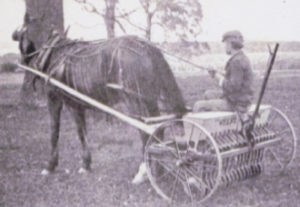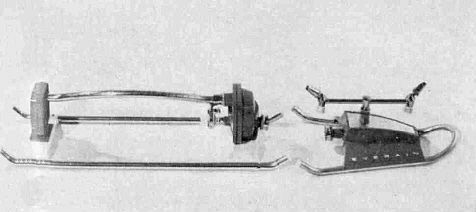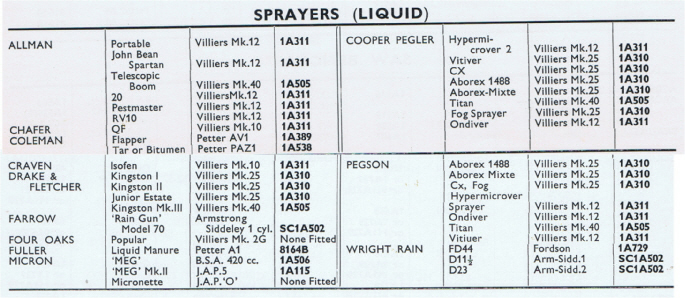Our journey this month takes us back to 1912 where labour was absolutely vital to keeping a country house spick and span both inside and outside. No self-respecting lady (or gentleman) would dare be seen without a couple of maids around the house keeping everything clean and smart whilst out in the gardens there’d be at least one struggling gardener faffing with the dahlias and doffing his cap for tuppence a week.
The bigger the properties the more labour was required. And much like today tools and machinery could cut down on time-consuming tasks and save on labour costs.
These following machines are absolutely fantastic and one can see how modern machines have developed over the years.
But we need a bit of labour to power the machinery and our time-saving saviour comes in the form of a horse, for horse powered equipment was really useful in a big country garden. So, gee up Dobbin, put yer boots on, we are going gardening.

Without his boots on poor Dobbin isn’t allowed on the posh lawns, or gravel driveway, in fact he isn’t allowed anywhere considered ‘delicate’ without being properly kitted out in footwear. We have no doubt all seen leather boots (image in the gallery) for ponies to stop them marking the grass when dragging a mower along. I’ve since discovered that metal horse boots were also available for the same reasons and they seem to be a curved metal plate with a Jubilee-type clip to attach them to the hoof. Available in several sizes, a quirk of ordering was that a drawing of the outline of the hoof (like drawing around your hand) was to be sent in with the order.
One of the main garden uses for pony-power (or horse) was for mowing lawns. The image below shows what appears to be a concerned gentleman trying to figure out the controls of his new 1912 combined mower AND roller, wonder if it came with a handbook to help the chap master all the levers and pedals?

The mower can easily be adjusted for high and low cut, ‘throwing in and out of gear’ and ‘for raising the knives when passing over stones, rough places, or roads’. It can also be used for rolling with the high-speed cutters disengaged. Note that in the image the horse is wearing boots.

In 1912 the blokes ride-on mower, above, didn’t have the capability of grass collecting, although pedestrian mowers did. Yet at the same time lawn sweepers were available to be drawn by horses across the lawn as in the image on the right. That’s correct – horse drawn lawn sweepers; turns out they are not a new-fangled invention from the last 50 years as would be assumed.
The lawn sweeper shown had a large 3′ revolving brush and the collecting box could be emptied on the move – which presumably meant heaps of lawn sweepings in several places that some worker then had to clear up. The sweeper was designed to be used after the lawn had been mown to give a perfect finish and leave no grass clippings behind.

Another way to improve the lawn is to stick a bit more seed down. The lawn seeder, pictured right and called the ‘Velvet Lawn’ was useful for renewing or thickening grass and renovating bald patches on lawns. It would evenly distribute the seed and plant it at a reasonable depth according to how the operator adjusted the machine. The description of the machines workings is involved but it essentially cuts a slot with a revolving steel disc and drops grass seed into the slot before a roller covers it up – pretty standard stuff then.
So far our horse has been mowing, sweeping and seeding the lawns. There are three more garden jobs that can be done:

There was a choice of garden lawn rollers. The basic one-horse affairs, which carried more of an agricultural look, could ‘smooth and keep in perfection, lawns, drives’ etc. The better two-horse rollers as shown in the image above were of superior quality and finish and were of a much more elaborate design with ‘attractively decorated woodwork’ above the roller and castings – the desirable woodwork decoration making no difference whatsoever to the effectiveness of the rollers prime function, suppose it’s much like wood veneer in an Austin Allegro – but it’s a selling point.

The next innovation, as pictured on the right, is a water carrier and sprinkler with over 100 gallon capacity, for lawns, driveways and gardens. It can spread water up to 18’ wide or reduced down to 1’ wide as required. It can also be adjusted to apply one or two narrow streams of water onto vegetables or plants in rows. My question is: If one took a horse across said vegetable growing area dragging such a sprinkler, wouldn’t it be tricky to avoid the plants as there are four hooves, two wheels plus a mouth at the front end to manoeuvre through the crops?
And for the sprinklers encore – it is the only sprinkler adapted for spreading liquid manure as it will not clog. We are suitably impressed with this early interpretation of the slurry tanker.

Finally, an amazing machine that’d probably take some skill in using is a turf cutter. It cuts the turf to a uniformed width and thickness and to any length. There is an adjustable roller to regulate the thickness of the turf from half an inch to two inches. It will cut up to an acre a day saving the labour of 40 men. Yet it’s still to roll, lift, transport and re-lay.
From a horses point of view I’m pretty sure the garden jobs would be preferable to pulling a plough through a field all day and being mostly in a garden pulling a mower or sweeper they’d be fair-weather jobs too. But, would they have their own horse, or did they just borrow a local one when required? Or horse-share even? Anyone know?
These images are from a brochure we have in VHGMC archive.
Everything for the Garden. New York: Peter Henderson and Co., 1912. Henry G. Gilbert Nursery and Seed Trade Catalogue Collection. Special Collections, National Agricultural Library.
https://specialcollections.nal.usda.gov/copyright-and-citation-guide
Note: Images/media are used for research/illustration purposes for non-profit only with copyright held by respective publishers where and as applicable.






























